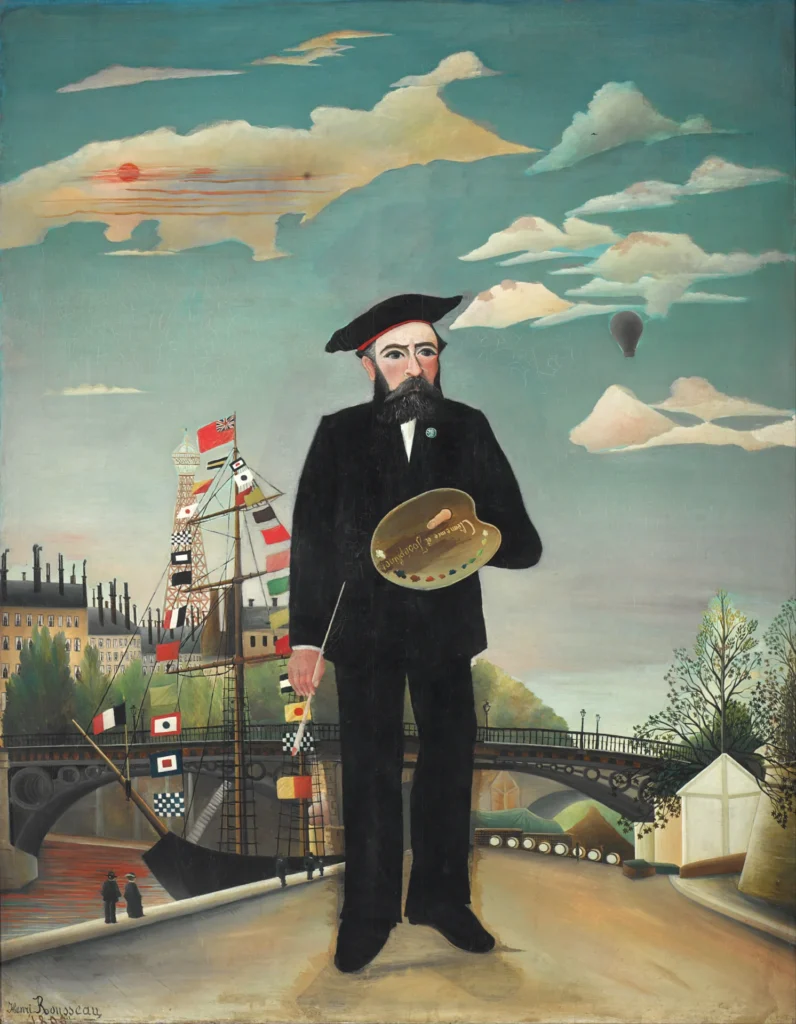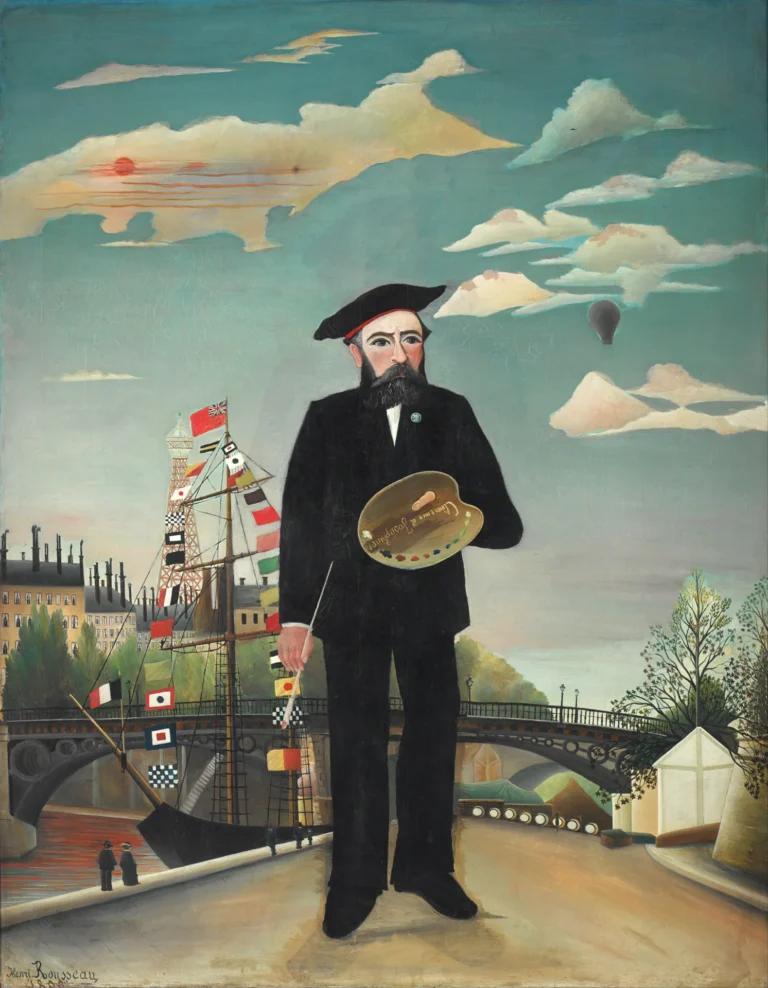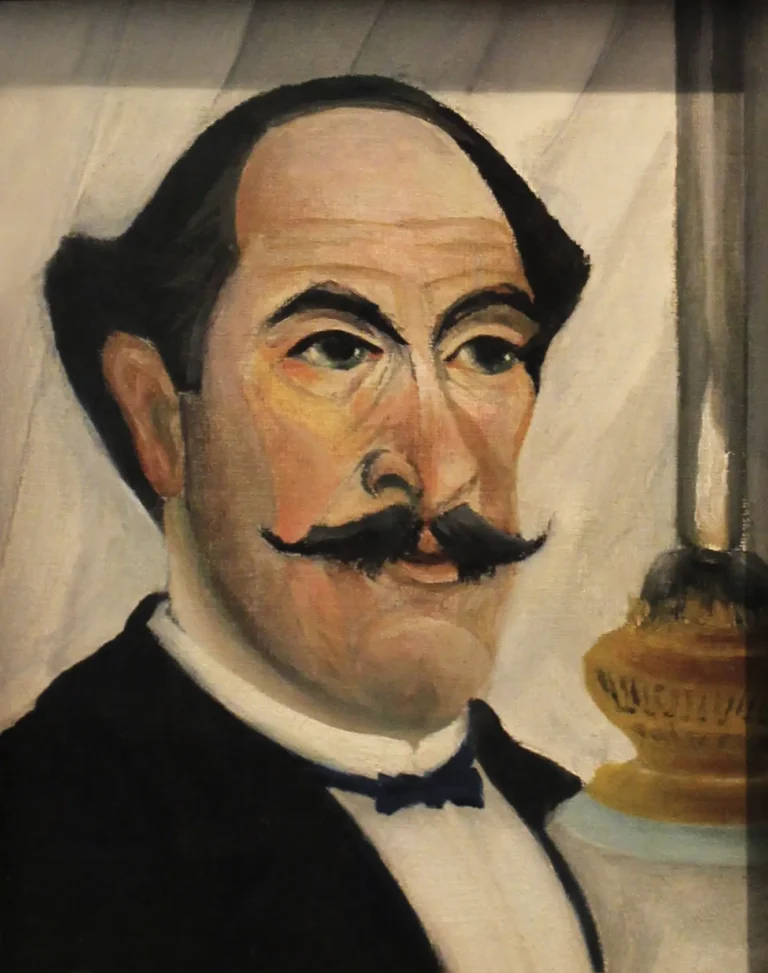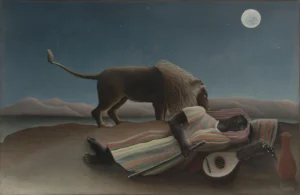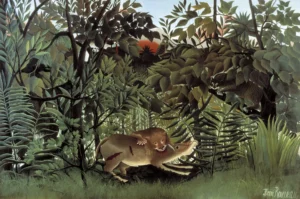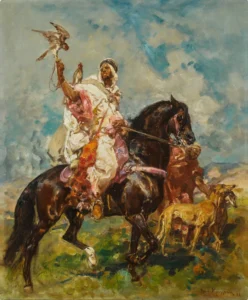Myself- Portrait – Landscape (1890)
In 'Myself, Portrait-Landscape,' Henri Rousseau merges portraiture and landscape to articulate his unique artistic voice. Painted in 1890, this self-portrait captures the artist in a serious posture, donning a beret and holding a palette inscribed with references to his two wives. Rich in symbolism, the background showcases a vibrant Parisian scene featuring the Eiffel Tower, demonstrating Rousseau's ambition and confidence as an artist. His naïve style imbues the work with a childlike wonder while challenging traditional artistic conventions of the time.
Year 1890
About the Artwork
Created in 1890, 'Myself, Portrait-Landscape' serves as a significant autobiographical statement by Henri Rousseau. The painting visually narrates Rousseau’s journey as a self-taught artist attempting to gain recognition in an era dominated by academic art. The inclusion of personal symbols such as his wives' names on the palette establishes a connection between his private life and his artistic identity. The depiction of the Eiffel Tower and other modern elements symbolizes not only Parisian culture but also Rousseau's full embrace of the contemporary world. This work stands as a testament to his unique place in art history, embodying the spirit of Post-Impressionism while breaking away from traditional norms.
Did You Know
Rousseau’s unique approach in ‘Myself, Portrait-Landscape’ melds the realms of portraiture and landscape, making it a distinctive addition to Post-Impressionist art that breaks away from conventional artistic categorizations.
‘Myself, Portrait-Landscape’ features symbolic elements, such as the Eiffel Tower and the names of Rousseau’s wives on his palette, representing both personal and societal reflections that enrich the narrative of the work.
The importance of ‘Myself, Portrait-Landscape’ is underscored by its selection for Michel Butor’s imaginary museum, showcasing its status as a pivotal work in the history of Western art and the Post-Impressionist movement.




